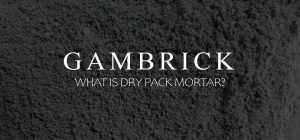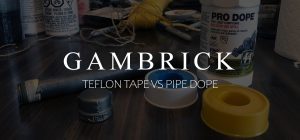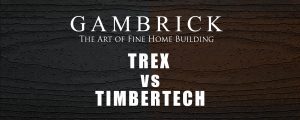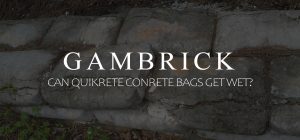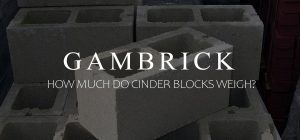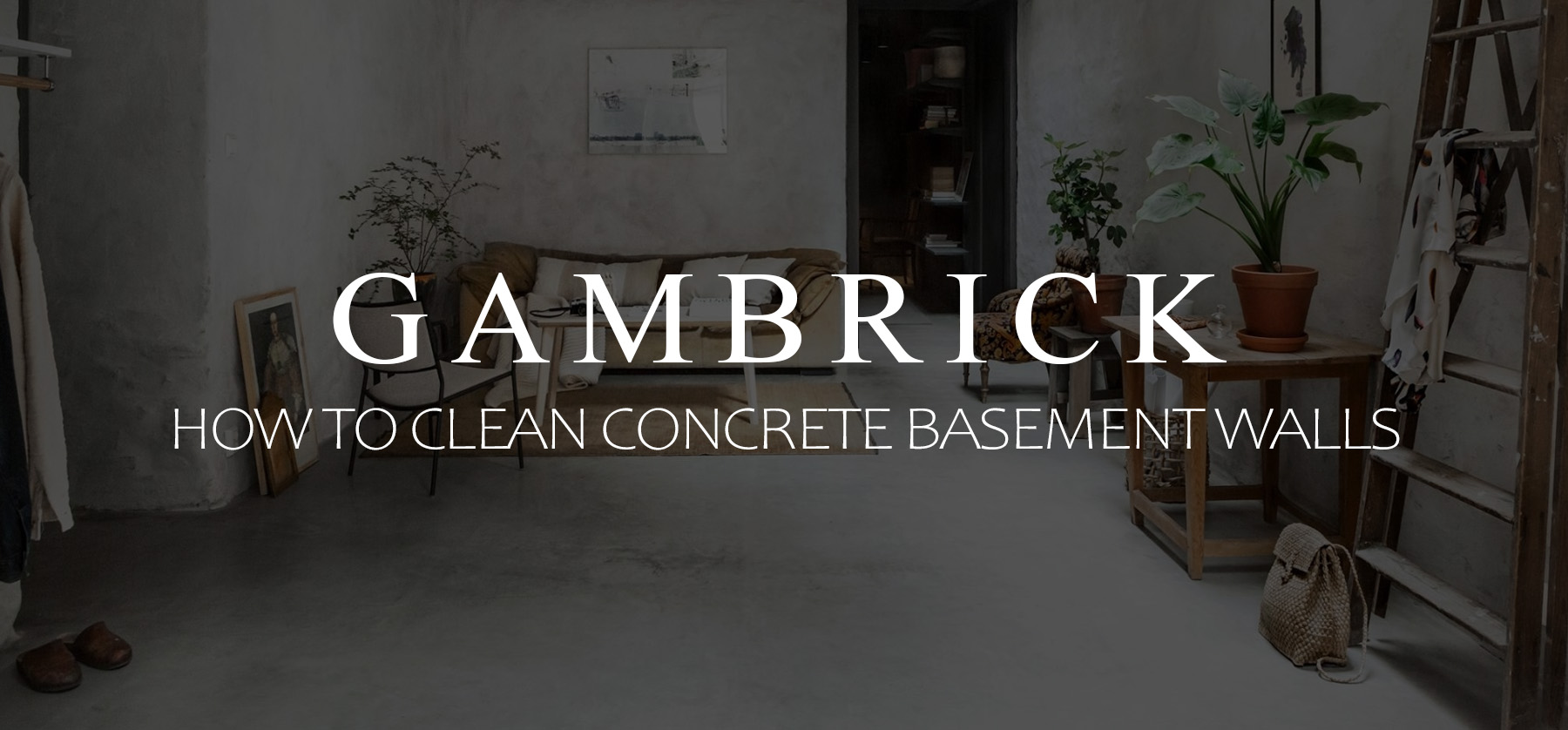
How To Clean Concrete Basement Walls
Concrete is a fantastic building material that’s been used all over the world for centuries. It’s strong, durable, affordable, easy to work with and easy to clean. Simply mix cement, sand and stone with water and you’ve got concrete. Adjusting the ratio of ingredients will alter the concrete’s properties which makes it a versatile building material. In residential construction, forms are built, rebar is installed and concrete is poured to create a solid wall of concrete. Generally these walls are only in the basement but some homes use them all over the house. Luckily, concrete is easy to clean, however, because it’s porous, it can absorb dirt and mold.
The best ways to clean concrete basement walls are tri-sodium phosphate, vinegar, cleansers, soap and water or hydrogen peroxide. Some products are multipurpose, acting as a cleanser, fungicide, and bactericide all in one. They won’t harm the concrete, but they do break down tough stains like oil and grime.
We’ll also review the most common types of stains you’ll find on your concrete basement walls and how to clean them. This is important because the way to best clean a concrete wall depends a lot on the type of stain your cleaning. There isn’t a one size fits all solution for every type of stain.
If you’re worried about cleaning your interior concrete walls because you’re not sure how, don’t be. Whether your walls are covered in mold or mildew, dirt, dust, grease or grime, you can clean them with the appropriate tools, methods and cleansers.
In this article we’ll explain how to clean concrete basement walls like a pro.
How To Clean Interior Concrete Walls
Before we start talking about more specific type of cleansers and techniques, lets go over some basic cleaning methods, tips and tricks. Whether your interior concrete walls are covered in mold and mildew, rust, grease, grime, or just dust and dirt, you can clean them with the right products and methods.
The most important thing to understand about cleaning your interior concrete walls is that concrete is porous. It’s not like cleaning a hardwood floor, tile or drywall. Mold, bacteria, dirt, dust, etc. will settle into the concrete. It’s important to not only clean the surface of your concrete but also inside it where mold spores can breed.
Whenever you clean a concrete wall, let the solution soak. Some strong cleansers only need to soak for a minute or two while natural solutions can sit for an hour. Vary the soak time based on the cleaner you’re using.
Cleaning a concrete wall involves some scrubbing. Use a medium to hard bristle brush. Scrubbing is the best way to clean inside those pores.
Some concrete cleaning solutions, like vinegar and water, are fairly harmless. But others, like acids and commercial cleansers, can be harmful to your health. They can damage your skin and eyes and make you sick if inhaled. Use the appropriate safety gear based on the type of cleaner you’re using. For harsh chemicals and acids I use gloves, a respiratory mask and goggles.
Cleaning an interior concrete walls isn’t that hard to do if you know how and have the proper tools and cleanser. But as with all surfaces, maintenance is a good idea. Cleaning the walls regularly will make life easier because the dirtier they get, the harder they’ll be to clean.
Step 1
Always make sure to protect the floor around the walls with plastic sheeting or tarps. This will catch drips or splatters from the cleaning solution and make cleanup easier.
I use painters tape to keep the plastic down tight. This helps prevent cleansers from slipping under the tarp. Mask around the base of the wall just like you would if you were painting.
Step 2
Dust the walls with a dry rag, feather duster or vacuum. This will remove loose dirt and dust.
A soft brush vacuum cleaner works great on walls. Get as much loose debris and dirt off the walls as you can before you start any serious cleaning.
Step 3
Fill a bucket with about 1 gallon of clean warm water. I like to use one of those 5 gallon buckets you can buy at Home Depot or Lowes. With a bucket this size, a gallon of water easily fits and won’t spill over the edge as I work.
Next, add a few squirts of non-ammonia dish soap. This isn’t anything fancy, most regular dish soap works fine.
Mix the water and soap. Dish soap is gentle enough for most people bare hands but you can use gloves if you prefer.
Fill another 5 gallon bucket with clean, warm water.
Step 4
Soak a rag in the bucket of plain water. Not the soapy water. Wring it out and wipe down the concrete walls. Rinse and wring out the rag as you work. Some of the dirt or grime the vacuum or duster didn’t get will be picked up by the rag.
I like to use a medium to hard rag. Stay away from rags that are too soft. Most concrete is rough and porous which can tear up the rag leaving particles behind.
Step 5
Once you’ve cleaned as much as you can off the walls with just water and a rag, start scrubbing them with a scrub brush and the soapy water.
Rinse out the scrub brush in the bucket of soapy water as you work. Rinse frequently because you don’t want to scrub the walls with a dirty brush.
I like to use a medium and hard brush. Start with the medium brush and get as much as you can. Anything that won’t come off I hit with the hard brush next. Keep scrubbing and soaking the brush as you work to keep it clean.
Add more soap to the water if you need it.
Step 6
Rinse the walls with a rag and clean water. This will remove residue left behind after scrubbing. Finally, wipe them down with a dry rag to remove excess moisture. You won’t be able to get them totally dry because concrete walls are porous and will absorb some water.
Step 7
If the walls have mold or mildew growth mix 1 gallon of water and ½ cup of chlorine bleach.This solution will help kill spores and prevent future growth.
After scrubbing the walls clean as directed in steps 1-6, scrub them again. This time use a stiff scrub brush and the bleach solution.
Before scrubbing, I fill a spray bottle with the solution and really soak areas that have mold. Let the bleach sit on the walls for 15 minutes before you start scrubbing. Giving the bleach some time to soak helps clean stubborn areas. Most surface mold will easily come off but spores can still live inside the concrete wall’s pores. Soaking the walls allows bleach to absorb into the pores where it can kill the spores.
Dry the walls thoroughly after your done. It’ll be hard to dry concrete walls with just a rag so I use a fan. Airflow is great at drying concrete.
The Most Common Concrete Basement Wall Stains And How To Clean Them
Concrete wall stains don’t just look bad, they could contain mold or mildew that can make you sick. It’s important to clean up mold as soon as you see it. And that includes cleaning concrete walls down to the pores and not just the surface layer.
Not all stains on a concrete wall are mold. Some of the most common stains we find on concrete is efflorescence, iron, grease, or regular dirt. These types of stains aren’t harmful to your health but should still be cleaned.
The most common cause of mold and mildew growth on a concrete basement wall is moisture. If you have a damp, warm basement without much airflow and find black or green stains then it’s probably mold. You should clean it immediately. Good drainage around a foundation and vapor barriers are very important, but they’re not always foolproof. If the soil around or under your basement concrete isn’t dry enough, water can penetrate through the concrete and cause mold growth.
If you plan to cover your concrete basement walls with a finish or paint them, you should clean them thoroughly first. To find out what the best paint for concrete basement walls is, click the link.
Below we’ll discuss the most common concrete walls stains so you can identify and deal with them correctly. Using the wrong cleaning method to remove a stain may no work and could result in more problems.
Concrete Efflorescence
A common stain you’ll find on a concrete wall is called efflorescence. It’s a white powdery substance that looks sort of like chalk. Don’t worry if you see it because although it’s unattractive, it’s not dangerous and is easy to clean off.
Efflorescence is made up of loose mineral salt that’s deposited on the concrete’s surface by water. Possible causes are ground water saturating the concrete or high levels of humidity. Both of which should be dealt with along with cleaning the walls.
High levels of relative humidity, if left unchecked, can cause more serious problems like mold. If this is a problem in your basement, consider adding some airflow. There are lots of really good basement fans on the market that do a great job. Fresh air is the best way to dry out those damp basement walls.
If the cause of your efflorescence is ground water then you’ll have to deal with it from the outside by sealing the concrete.
A simple soap and warm water solution is all you need to clean efflorescence off a concrete basement wall. There are commercial cleansers on the market designed to clean efflorescence, but I’ve never needed them. The mineral deposits get soft enough to scrub off when wet. Use a medium to hard bristle brush and scrub until the efflorescence is gone.
You can’t prevent efflorescence from returning in the future unless you deal with the cause. Simply cleaning it off your concrete walls won’t prevent more from growing. To prevent it’s growth you need to keep the concrete walls dry.
If you decide to try a commercial cleanser I recommend one that’s 100 percent biodegradable, non-toxic, and VOC-free.
Reddish/Orange Concrete Stains
A very common stain to see on a concrete basement wall is reddish/orange in color. The cause is usually rust. Don’t be too concerned if you find it because rust stains aren’t hazardous to your health. However, you should not only clean the stain but also deal with the cause.
If your soil has lots of iron deposits, the concrete walls could absorb iron ochre. Groundwater that seeps into your basement walls will be carrying ochre with it. This is the same basic cause of efflorescence, only instead of leaving mineral deposits behind when the water evaporates, it leaves iron.
Although iron ochre is not harmful to your health, it can leave a stain that’s very hard to clean.
Another cause of rust stains on a concrete wall are exposed rebar. Inside concrete basement walls you’ll find rows of rebar for reinforcement. As long as the rebar remains locked inside the foundation, it won’t rust because air can’t get to it. However, if there are cracks that let air in, the rebar can rust. The rust will spread out until you see it on the surface of the wall. Scrub until the stain is gone but also make sure to repair the issue.
I always start cleaning rust stains with the standard warm water and soap solution. Scrub with a medium to hard bristle brush. This won’t get all of it, but it’ll remove the surface rust.
WD-40 is another great product for removing rust from concrete walls. Spray it allover the rust stains and wait a few minutes. It’ll penetrate into the pores to loosen up rust stains. Then scrub with the soapy water.
For rust that’s deeper inside your concrete’s pores, use a commercial concrete rust remover. As will WD-40, apply the cleanser, wait, and then scrub.
Black Or Gray Concrete Stains
Black or gray spots on your walls are generally mold. This is something you should be worried about because mold can be harmful to your health.
Mold typically grows in damp, warm settings. If that describes your basement then bring in some airflow to dry it out. I install basement ventilation in pretty much every basement we work on just to prevent mold growth. Fresh outside air is great at drying out those damp walls.
Try to maintain low humidity. If moisture can accumulate on the concrete walls or floors it could start growing mold.
Luckily, cleaning and killing mold spores isn’t that hard once you find them. First, use a soap and water solution to clean all the surface mold. Soak the walls with water and then wipe the mold with a rag. It’ll come off easily. But this initial cleaning is only surface level. Once you’re done you have to clean deep to kill the spores.
After the wall has dried, mix some bleach in a bucket of fresh water. I use 1 about part bleach for every 3 parts water. Soak the wall in the bleach solution for about 20 minutes. Get the concrete really wet so that it gets into the pores. Dry the wall thoroughly when done.
You can substitute vinegar for bleach if you prefer. It work about the same but isn’t as harsh. Keep the ratio of 1 part vinegar to 3 parts water.
For really bad mold, try a commercial mold killer.
The most important thing is getting to the root of the mold. Spores will live inside the concrete’s pores so make sure to really soak the wall and all it’s pores.
Chipping & Flaking
Many basement wall are coated with sealants such as paint or cement to seal them against moisture. Over time the bond between the sealant and concrete can weaken which causes flaking and chipping. Most of the time this is caused by improper application of the sealant or moisture inside the wall.
As moisture builds up inside the concrete wall it creates pressure. The pressure pushes at the backside of the sealant which can result in chipping and flaking.
If you’re going to use a sealant on concrete basement walls, make sure it’s a product specifically designed for concrete. Wall paints are not permeable which means water can not pass through them. But concrete paint is. It’s designed to breath which helps it resist chipping and flaking.
Another common mistake is not preparing the walls prior to installation of the sealant. Make sure the walls are clean and dry or you won’t get a solid bond.
To clean your concrete basement walls you’ll need a scraper and sander. It can be a lot of work to fix this kind of mess. Use the scraper to break off loose chunks of sealant. Then use the sander to create a fine edge wherever you broke off loose chunks. Use a tough grit sandpaper and make sure to wear a mask and goggles. This type of fine dust can be bad for your health.
Once all the cleaning is done, dust an dry the entire area before applying a fresh coat of sealant.
Flaking Or Crumbling Concrete Walls
When concrete gets really old it can start to break down into chunks or flakes. Break off the loose chunks with your hand and use a masonry brush to clean off all the small bits. Try not to damage the wall as you clean. Just take off anything loose or brittle. Gently break off pieces that are already loose but don’t force anything.
Apply fresh concrete to all the areas you cleaned. Quikrete makes some great fast setting mixes that are great for this kind of work. They dry anywhere from 3500-4000 PSI at 28 days which should be strong enough for residential walls. Many people use cement or mortar alone to repair this kind of damage but I prefer concrete because it’s much stronger.
Spalling is a different problem than age related damage and needs to be fixed right away. Large parts of a concrete wall can start to peel, break or chip away. This is also known as scaling. The most common cause of concrete spall is the freeze/thaw cycle. When moisture held inside the concrete wall expands and contracts with temperature changes, it creates pressure. Over time, as the pressure rises and falls, it stresses the thin surface layer of the concrete, which leads to spalling.
To clean spalling damage, chip away loose pieces as best you can and use a masonry brush to remove small loose pieces and dust. Then repair the wall with new concrete.
Keeping humidity levels low inside the basement and keeping the exterior sealed are the best ways to avoid spalling.
Why Should You Clean Your Basement Walls?
It’s important to keep your concrete walls clean because they’re so porous. Surface layer dirt, grime, mold, grease, mildew, etc. can eventually work there way into pores and cracks where they can become a more serious problem. Organic material can eventually breed and feed mold spores which can quickly spread to more than just your walls. Mold working it’s way into heating an air ducts can become a health concern for an entire household. Keep the walls clean can cut down on this risk.
The first step to caring for concrete walls is keeping the surface clean. If the surface of your concrete basement walls are clean, it’s easy to spot problem areas. For starters, wipe or vacuum them down. You don’t have to do it regularly. Once a year can be more than enough.
Inspect the basement for water and moisture on the walls. If it feels damp or smells musty, the humidity is probably too high and you need airflow. Concrete basement walls should always be kept dry inside and out.
Surface water is another issue. All around your concrete walls should be drainage and a sealant. Water can eventually work it’s way right through a concrete foundation wall and into your basement. This has to be prevented from the outside.
Remove dust and filth from the walls. Even common particles can contain organic material that can feed mold.
Common Concrete Basement Wall Cleansers
In this section we’ll discuss some common concrete wall cleansers along with when and how to use them.
Trisodium Phosphate
Trisodium Phosphate (TSP) is a white, granular or crystalline solid cleaner. It’s highly soluble in water which produces an alkaline solution. TSP is used as a cleaning agent, builder, lubricant, food additive, stain remover, and degreaser. It works great at removing many common stains found on basement concrete walls.
Trisodium phosphate (TSP) is one of the most commonly used cleaning chemicals for concrete. But it’s considered an all around general cleaner, not a specialty cleanser. For example, if you have rust stains or mold, use something specific for cleaning those types of stains. Use TSP for more general stuff like dirt, grease or grime.
To clean your concrete walls with TSP, you’ll need the following items:
- 1 gal (3.8 l) warm water
- 3 oz (85 g) TSP
- Bucket
- Wire brush
- Spray Bottle
After you’ve got all your supplies ready, here’s what you do:
- Spray the concrete wall with water and scrape it with the wire brush to loosen dirt.
- Rinse the wall with a hose, power washer or spray bottle. This depends on the size of the stain your cleaning.
- Fill the bucket halfway with water and TSP and then stir well.
- Spray the solution on the stained sections of your concrete wall and let it sit.
- Scrub the wall thoroughly. Apply more TSP as needed.
- Clean the wall by rinsing it with clean water.
- Repeat spraying TSP and scrubbing as needed until the stains are gone.
- Dry the walls completely. The best way to do this is fresh and and circulation.
Bleach Kills Mold
Bleach is a great disinfectant that’s safe to use on concrete. It can be mixed with water and used to remove stains, mildew, mold,dirt, grime, etc. from your walls.
Bleach is good at killing surface layer mold but may not kill mold inside the concrete’s pores. You need to let the bleach solution sit on the walls and penetrate for it to kill deep mold. Soak the walls with your bleach solution and let it sit for a few minutes before scrubbing.
To make a bleach cleaning solution, do the following:
- 1 cup bleach
- 1 gal (3.8 l) water
- Spray bottle
- Sponge
- A bucket
- Scrub Brush
- Rags
When cleaning concrete walls with a bleach solution, use rubber gloves, a respirator, and eye protection. Make sure the basement is well-ventilated whenever you work with bleach.
Before cleaning the wall with bleach, wash it down with soap and water first. Whatever doesn’t come off with water can be removed with the bleach.
Use Hydrogen Peroxide To Clean Mold
Another great cleanser for mold is hydrogen peroxide. In this one cleaner, you get a bactericide, virucide, and fungicide.
Hydrogen Peroxide is a versatile and generally safe cleaner that has dozens of uses around the home. It’s a great disinfectant because it destroys almost all bacteria, including mold.
You’ll need the following items:
- A spray bottle
- 3% hydrogen peroxide solution
- A bristle brush
- Water
To kill the mold on your concrete wall:
- Pour the hydrogen peroxide solution into a spray bottle. If you don’t want to use all peroxide, mix it with some water.
- Saturate the walls with the solution.
- Let it soak in for 30 minutes.
- Scrub the wall thoroughly with your brush to lift mold out of the concrete’s pores. Repeat as needed.
- Use a hose to spray the walls with clean, warm water.
- Dry the walls thoroughly.
It’s very important whenever your cleaning mold off a concrete wall that you get deep inside the pores. Whether you’re using Hydrogen Peroxide, Bleach, Ammonia, Vinegar, or some other cleanser, saturate the wall and let it sit. The solution will slowly soak into the concrete’s pores which will kill deep mold spores. If all you do is clean the surface, mold can grow back.
Vinegar Is A Natural Way To Kill Mold On Concrete Walls
Vinegar is one of the safest cleaners for cleaning concrete and killing mold from basement walls. It’s a weak acid that’s great at disinfecting but it’s mild enough to use on just about any surface. And it’s an all natural solution that won’t irritate most people skin.
Vinegar is typically used in combination with another natural cleaner like baking soda. The concrete is soaked with vinegar first to loosen up dirt and kill mold, then the wall is scrubbed with baking soda.
To produce the cleaning solution you’ll need:
- White vinegar
- Baking soda and water solution
- A spray bottle
- Cleaning brush
To clean your concrete using vinegar:
- Soak stains and mold with undiluted white vinegar.
- Let the vinegar sit on the moldy areas for at least 60 minutes so that it penetrates into the concrete and kills spores embedded in the walls.
- Spray the baking soda and water solution onto the wall and start scrubbing.
- To finish the job, rinse the wall with clean water.
- Dry the walls.
It’s safe to leave some of the vinegar residue on the concrete so a simply rinse of the walls is fine. There’s no need for a second rinse like with harsher cleansers. If some of the vinegar residue is left inside the concrete’s pores it can actually inhibit future mold growth.
Ammonia Can Clean Concrete Walls
Ammonia is another cleanser that works really well on concrete walls. It dissolves grease and grime quickly and is perfectly safe to use on concrete. It’s also effective at cleaning and killing mold.
To make an ammonia-based concrete cleaner, do the following:
- Dish detergent
- Warm water
- ¼ cup (59.15 ml) ammonia
- A bucket
- A stiff nylon brush
- Spray Bottle
In a bucket, combine 14 cup (59.15 ml) ammonia, a few squirts of detergent, and water. Mix them together to produce the cleaning solution. First, clean the wall of loose dust and dirt with a rag, feather duster or vacuum. Then use some soap and water to clean the basic dirt stains off. Next, scrub the solution from one end of your wall to the other with the nylon brush until you’ve coated the entire surface. After that, clean the wall with a hose and a clean towel.
Make sure your basement is well ventilated when working with ammonia. I recommend using safety equipment like gloves, goggles and a mask too.
Muriatic Acid Will Clean Concrete Walls
Muriatic acid is a very effective cleaner for concrete walls. It’ll get rid of stubborn stains that some other cleansers can’t touch.
You’ll need the following items to prepare an acid solution:
- 4 gal (15.1 l) water
- 1 gal (3.8 l) muriatic acid
- A 5-gal (18.9 l) bucket
- A stiff bristle brush
To clean your concrete walls with acid, follow these steps:
- Wet the wall and let it dry completely.
- Mix the acid and water cleaning solution in a bucket.
- Scrub the wall with the solution. Let it sit on hard to clean stains.
- Repeat the process as needed until all the stains are gone.
- Clean the wall afterward with water at least twice to remove any residue.
- Don’t let acid residue sit on the walls after your done.
Muriatic acid is poisonous. When working with it, make sure your basement is well ventilated and use a respirator, goggles, and rubber gloves.
Borax
Borax is a cleaner that can quickly penetrate oil stains on concrete. That’s because it’s an emulsifier made from sodium borate or sodium tetraborate. It’s a powdery white mineral that’s been used as a cleaning product for several decades.It’s also good at killing mold and inhibiting it’ future growth.
Borax is a powdery white substance that’s widely used as a household cleaner and a booster for laundry detergent. It’s a combination of boron, sodium, and oxygen.
You’ll need the following items to complete the solution:
- ½ cup (118.29 ml) borax
- 1 gal (3.8 l) water
- ½ cup (about 115.20 g) washing soda (not baking soda)
- 1 tablespoon of liquid dish washing detergent
- A bucket
- A long handled scrub brush
To clean concrete with Borax, follow these steps:
- Mix the ingredients in a bucket.
- Using the scrub brush, agitate the mixture for about 3-4 minutes.
- Use a spray bottle to soak the stained area.
- Let the solution sit for at least a few minutes. This will allow it to penetrate into the concrete’s pores.
- Scrub the stained surfaces. Repeat as needed.
- There’s no need to wash the wall when you’re done cleaning. Borax residue on a wall can inhibit mold growth.
- Let the wall dry when done.
Hydrochloric Acid Can Remove Rust Stains
Hydrochloric acid (muriatic acid) is a great way to remove rust stains from a concrete wall. And just about any other type of stain too. Be careful when working with acids because they can be harmful and smells bad. So make sue the area is really well ventilated. Where the appropriate safety equipment like goggles, a mask and gloves.
To make a concrete cleaner with hydrochloric acid, do the following:
- Mix hydrochloric acid with water in the ratio of two cups acid per one cup of water.
- Spray the acid solution onto your wall and let it soak for 5-10 minutes. Don’t let it sit too long or it could turn the concrete blueish.
- Scrub the rust stain with a brush.
- Rinse the concrete walls thoroughly. make sure to remove all the acid. You may need a second rinse to get it all.
- Repeat these steps if necessary.
- Dry the walls.
When working with hydrochloric acid, wear safety equipment. I recommend goggles, gloves and a mask. Make sure the basement is well ventilated.
Check the product label for warnings about compounds that react badly with acid.
I recommend using acids as a last resort. Try soap and water first and then work your way up to harsher cleansers and acids. Even if mild solutions don;t work, they’ll clean the surface level stains off your concrete walls. Then you’ll only have to use harsher cleaners in small doses. This will greatly limit your risk and exposure.
Lemon Juice And Vinegar Is A Natural Way To Clean Concrete
Vinegar and lemon juice are both acidic, and on there own, pretty good cleaners. But you can boost the cleaning power of a vinegar solution by mixing them together. They dissolve light stains while killing bacteria which makes them great fr cleaning a concrete basement wall. And there an all natural solution that’s very mild.
Keep in mind that a vinegar and lemon juice cleaner will only work on mild stains. But it’s great for killing mold. The trick is to let natural cleaners soak into the concrete. Just about anything can kill a surface level stain, but you have to go deep to kill spores living inside concrete.
How To Make A Great vinegar and lemon juice DIY concrete cleaner:
- White vinegar
- Lemon juice
- Spray bottle
- Stiff bristled brush
Follow these steps to use the cleaner:
- Pour or spray the vinegar and lemon juice onto the stained area
- Allow the solution to soak for 10 minutes to one hour. The longer it soaks the better it will work.
- After the solution is done soaking, spray the area again with a fresh coat.
- Scrub the stain using a brush.
- Rinse the surface with cold water.
- Repeat these steps as needed.
Tea Tree Oil Is Another Natural Cleaner That Will Kill Mold In Concrete
Tea tree oil is a natural fungicide that’s great at killing mold. It can be mixed with water and sprayed onto concrete basement walls to kill spores. And it’s all natural so it’s much safer than chemicals and acids.
Here’s how to make a tea tree oil cleaner:
- 1 tablespoon tea tree oil
- 1 cup (236.59 ml) water
- Spray bottle
- Scrub brush
- Rag
- Dish soap
Wipe the surface level mold off the concrete first with a rag and soapy water.
Spray the moldy areas with your tree oil solution and let it soak. The longer it soaks the better it will work.
When you’re ready to start scrubbing, spray the wall with solution again. Then start scrubbing hard into the pores.
When you’re all done let the concrete walls dry.
Use A Pressure Washer To Clean Concrete Walls
Another option for cleaning your concrete basement walls is a pressure washer. But keep in mind that they’ll spray water everywhere. I usually don’t use them for interior concrete walls unless there’s a drain nearby to collect the water.
Adjust the pressure based on the condition of your concrete. If it’s old and brittle, don’t use maximum pressure.
When it comes to using a detergent with your power washer, follow the manufacturer’s instructions.
To clean your concrete walls with a pressure washer do the following:
- I like to soak the walls with a detergent prior to using pressure. For this I use a spray bottle. Let the solution soak for about 10 minutes.
- Spray the detergent in a sweeping motion one section at a time. I usually work in areas about 1 foot x 1 foot at a time.
- Allow the detergent to soak the concrete for about another 10 minutes.
- Rinse the walls to remove any residual detergent.
- Dry the walls when you’re all done.
I like to use a fan tip on my power washer. It makes cleaning large areas much easier and provides plenty of pressure.
One of the benefits to using pressure is that it helps clean inside the concrete’s pores. Essentially the power washer is doing the job of your scrub brush. But you have to make sure you get the entire surface. It’s easy to miss spot when spraying which is why I only clean a small area on concrete wall at a time.
Conclusion
Concrete stains are ugly and can lead to more serious problems if left alone. If mold is allowed to grow unchecked, it could spread to the rest of your house and cause health problems. This is even more serious if it gets into your air ducts because from there the mold can reach the entire home. It’s vital to keep your concrete basement walls clean.
The cleansers we’ve discussed here all work to varying degrees. In my opinion upkeep and regular cleanings is the best method. If you keep the concrete walls clean, you can stay away from the harsher chemicals and acids.
Before using any solution to clean concrete walls, always read the manufacturer’s instructions.
Wear safety gear whenever you work with cleaners, especially the harsh stuff. And make sure to always have good ventilation. Some of these cleaners smell really bad.
If you’re dealing with mold, let those cleaning solutions soak. It’s easy to clean mold off the surface of a concrete wall, but it can still breed inside the pores if you don’t clean deep. The best way to do that is to let the solution soak in and then scrub hard.
Make sure to dry the walls completely when you’re done. Use a fan to blow air onto the walls.
If you’ve got a damp basement with high humidity, consider a basement fan. Fresh air is a great way to keep a basement dry. High humidity is one of the main causes of mold growth.
Summary: How To Clean Concrete Basement Walls?
Concrete is a fantastic building material that’s been used all over the world for centuries. It’s strong, durable, affordable, easy to work with and easy to clean. Simply mix cement, sand and stone with water and you’ve got concrete. Adjusting the ratio of ingredients will alter the concrete’s properties which makes it a versatile building material. In residential construction, forms are built, rebar is installed and concrete is poured to create a solid wall of concrete. Generally these walls are only in the basement but some homes use them all over the house. Luckily, concrete is easy to clean, however, because it’s porous, it can absorb dirt and mold.
The best ways to clean concrete basement walls are tri-sodium phosphate, vinegar, cleansers, soap and water or hydrogen peroxide. Some products are multipurpose, acting as a cleanser, fungicide, and bactericide all in one. They won’t harm the concrete, but they do break down tough stains like oil and grime.
We’ll also review the most common types of stains you’ll find on your concrete basement walls and how to clean them. This is important because the way to best clean a concrete wall depends a lot on the type of stain your cleaning. There isn’t a one size fits all solution for every type of stain.
If you’re worried about cleaning your interior concrete walls because you’re not sure how, don’t be. Whether your walls are covered in mold or mildew, dirt, dust, grease or grime, you can clean them with the appropriate tools, methods and cleansers.
If you have any questions or comments about how to clean concrete walls in a basement Email any time.

John Mazzuca | About | More Posts |
Custom Home Builder
John Mazzuca is a custom home designer and builder at Gambrick with over 25 years experience in the construction industry. John has designed, built and/or remodeled hundreds of homes, small buildings, and commercial projects. He writes about business, real estate, home building, and household electronics. His work has been featured in Fox Business, Better Homes & Garden, House Beautiful, and more.



